
Rabbit Anti-FSH receptor antibody
Follicle-stimulating hormone receptor precursor; Follicle stimulating hormone receptor; Follicle stimulating hormone receptor isoform 1; Follitropin receptor; FSHRO; LGR1; ODG1; Follicle-stimulating hormone receptor; FSH-R; FSH R; Fshr; FSHR_HUMAN; MGC141
View History [Clear]
Details
Product Name FSH receptor Chinese Name 促卵泡刺激素受体抗体 Alias Follicle-stimulating hormone receptor precursor; Follicle stimulating hormone receptor; Follicle stimulating hormone receptor isoform 1; Follitropin receptor; FSHRO; LGR1; ODG1; Follicle-stimulating hormone receptor; FSH-R; FSH R; Fshr; FSHR_HUMAN; MGC141667; MGC141668; ovarian dysgenesis 1. literatures Research Area Neurobiology Signal transduction Immunogen Species Rabbit Clonality Polyclonal React Species Human, Mouse, Rat, (predicted: Dog, Pig, Cow, Horse, Sheep, Guinea Pig, ) Applications WB=1:500-2000 ELISA=1:5000-10000 IHC-P=1:100-500 IHC-F=1:100-500 Flow-Cyt=1μg/Test IF=1:100-500 (Paraffin sections need antigen repair)
not yet tested in other applications.
optimal dilutions/concentrations should be determined by the end user.Theoretical molecular weight 78kDa Cellular localization The cell membrane Form Liquid Concentration 1mg/ml immunogen KLH conjugated synthetic peptide derived from human FSHR: 201-300/695 <Extracellular> Lsotype IgG Purification affinity purified by Protein A Buffer Solution 0.01M TBS(pH7.4) with 1% BSA, 0.03% Proclin300 and 50% Glycerol. Storage Shipped at 4℃. Store at -20 °C for one year. Avoid repeated freeze/thaw cycles. Attention This product as supplied is intended for research use only, not for use in human, therapeutic or diagnostic applications. PubMed PubMed Product Detail The protein encoded by this gene belongs to family 1 of G-protein coupled receptors. It is the receptor for follicle stimulating hormone and functions in gonad development. Mutations in this gene cause ovarian dysgenesis type 1, and also ovarian hyperstimulation syndrome. Alternative splicing results in multiple transcript variants. [provided by RefSeq, Mar 2010]
Function:
Receptor for follicle-stimulating hormone. The activity of this receptor is mediated by G proteins which activate adenylate cyclase.
Subunit:
Interacts with ARRB2.
Subcellular Location:
Cell membrane; Multi-pass membrane protein.
Tissue Specificity:
Sertoli cells and ovarian granulosa cells.
DISEASE:
Defects in FSHR are a cause of ovarian dysgenesis type 1 (ODG1) [MIM:233300]; also known as premature ovarian failure or gonadal dysgenesis XX type or XX gonadal dysgenesis (XXGD) or hereditary hypergonadotropic ovarian failure or hypergonadotropic ovarian dysgenesis with normal karyotype. ODG1 is an autosomal recessive disease characterized by primary amenorrhea, variable development of secondary sex characteristics, and high serum levels of follicle-stimulating hormone (FSH) and luteinizing hormone (LH).
Defects in FSHR are a cause of ovarian hyperstimulation syndrome (OHSS) [MIM:608115]. OHSS is a disorder which occurs either spontaneously or most often as an iatrogenic complication of ovarian stimulation treatments for in vitro fertilization. The clinical manifestations vary from abdominal distention and discomfort to potentially life-threatening, massive ovarian enlargement and capillary leak with fluid sequestration. Pathologic features of this syndrome include the presence of multiple serous and hemorrhagic follicular cysts lined by luteinized cells, a condition called hyperreactio luteinalis.
Similarity:
Belongs to the G-protein coupled receptor 1 family. FSH/LSH/TSH subfamily.
Contains 9 LRR (leucine-rich) repeats.
Contains 1 LRRNT domain.
SWISS:
P23945
Gene ID:
2492
Database links:
Entrez Gene: 2492 Human
Entrez Gene: 14309 Mouse
Entrez Gene: 443299 Sheep
Omim: 136435 Human
SwissProt: P23945 Human
SwissProt: P35378 Mouse
SwissProt: P35379 Sheep
Unigene: 1428 Human
Unigene: 57155 Mouse
Unigene: 162843 Rat
FSHR属于G protein-coupled receptor超家族中的glycoprotein亚家族成员,Transmembrane protein。人类的FSHR是由695个氨基酸组成的一条肽链。主要分布于睾丸支持细胞和卵巢颗粒细胞,成熟的FSHR蛋白分子质量为:75kDa。Product Picture
Testis (Mouse) Lysate at 40 ug
Primary: Anti-FSH receptor (SL0895R)at 1/300 dilution
Secondary: IRDye800CW Goat Anti-Rabbit IgG at 1/20000 dilution
Predicted band size: 78 kD
Observed band size: 78 kD
Tissue/cell: human placenta tissue; 4% Paraformaldehyde-fixed and paraffin-embedded;
Antigen retrieval: citrate buffer ( 0.01M, pH 6.0 ), Boiling bathing for 15min; Block endogenous peroxidase by 3% Hydrogen peroxide for 30min; Blocking buffer (normal goat serum,C-0005) at 37℃ for 20 min;
Incubation: Anti-FSH receptor Polyclonal Antibody, Unconjugated(SL0895R) 1:200, overnight at 4°C, followed by conjugation to the secondary antibody(SP-0023) and DAB(C-0010) staining
Paraformaldehyde-fixed, paraffin embedded (rat ovary); Antigen retrieval by boiling in sodium citrate buffer (pH6.0) for 15min; Block endogenous peroxidase by 3% hydrogen peroxide for 20 minutes; Blocking buffer (normal goat serum) at 37°C for 30min; Antibody incubation with (FSH receptor) Polyclonal Antibody, Unconjugated (SL0895R) at 1:200 overnight at 4°C, followed by a conjugated secondary (sp-0023) for 20 minutes and DAB staining.Blank control: HUVEC cells(blue).
Primary Antibody:Rabbit Anti-FSH receptor antibody(SL0895R), Dilution: 1μg in 100 μL 1X PBS containing 0.5% BSA;
Isotype Control Antibody: Rabbit IgG(orange) ,used under the same conditions );
Secondary Antibody: Goat anti-rabbit IgG-PE(white blue), Dilution: 1:200 in 1 X PBS containing 0.5% BSA.
Protocol
The cells were fixed with 2% paraformaldehyde (10 min) .Primary antibody (SL0895R, 1μg /1x10^6 cells) were incubated for 30 min on the ice, followed by 1 X PBS containing 0.5% BSA + 1 0% goat serum (15 min) to block non-specific protein-protein interactions. Then the Goat Anti-rabbit IgG/PE antibody was added into the blocking buffer mentioned above to react with the primary antibody at 1/200 dilution for 30 min on ice. Acquisition of 20,000 events was performed.
Bought notes(bought amounts latest0)
No one bought this product
User Comment(Total0User Comment Num)
- No comment
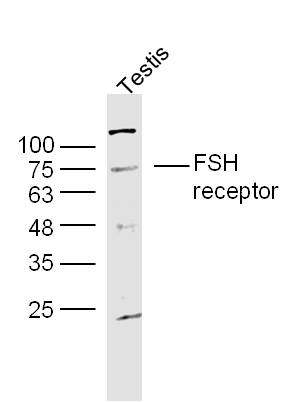
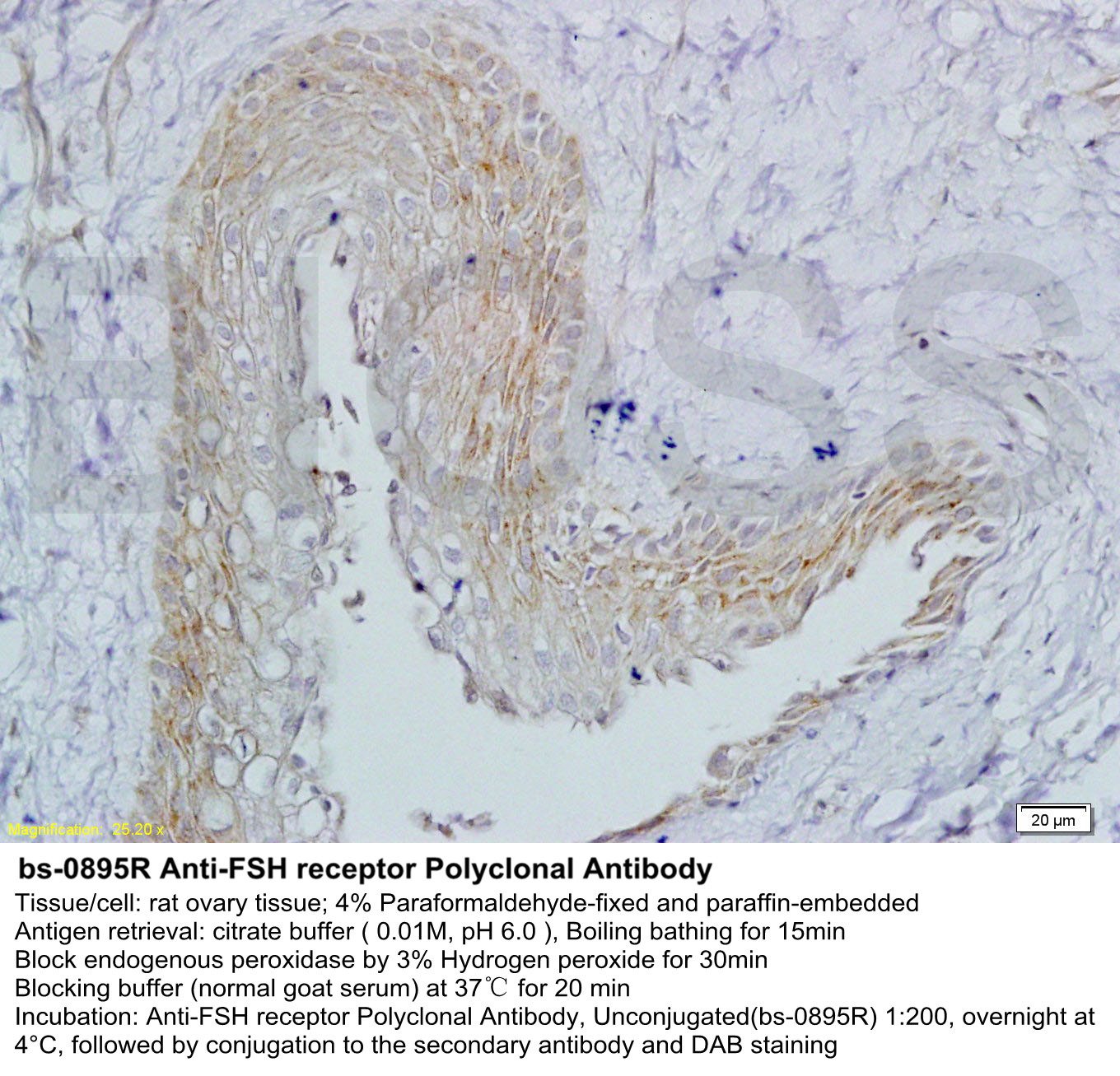
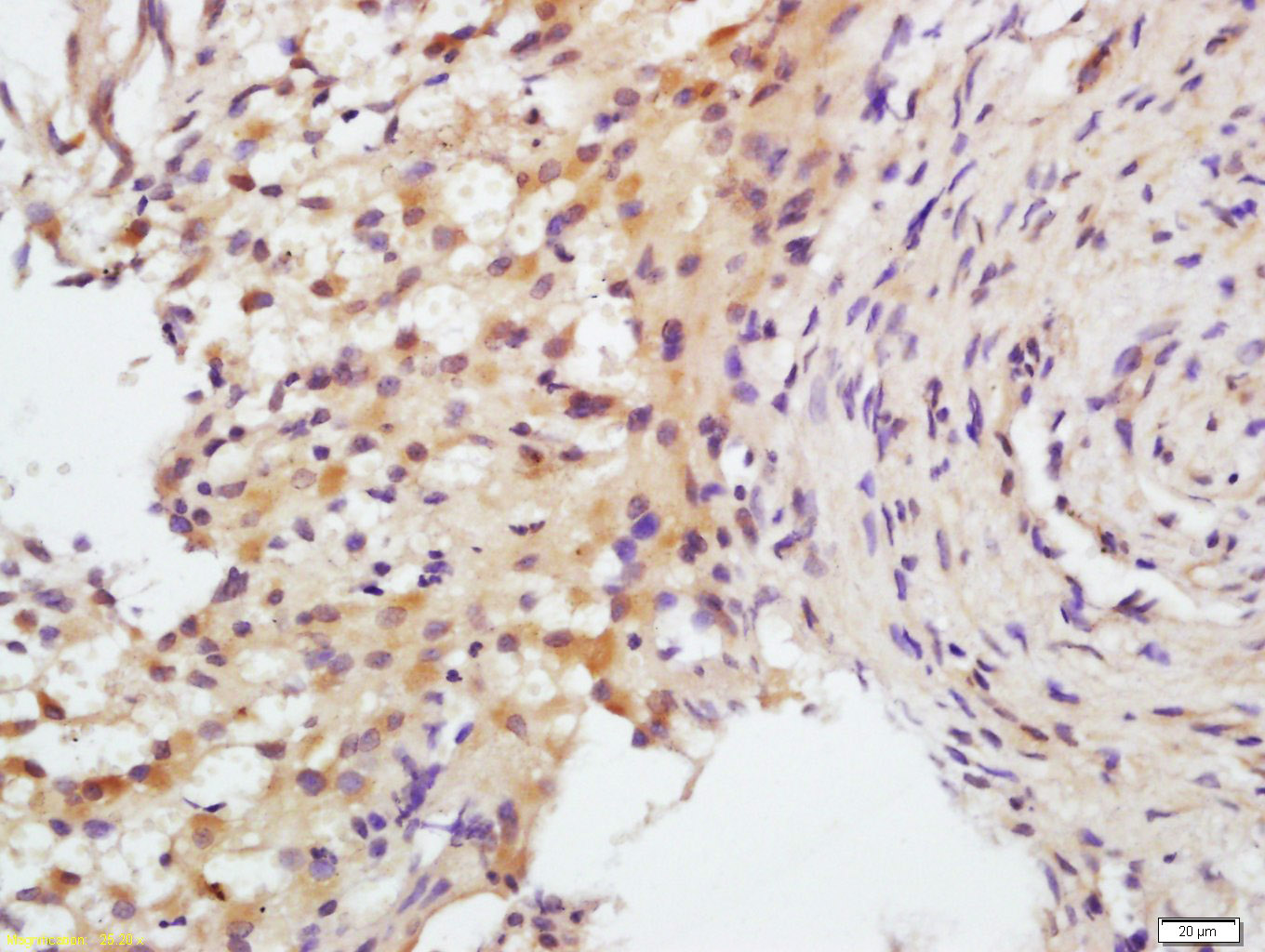
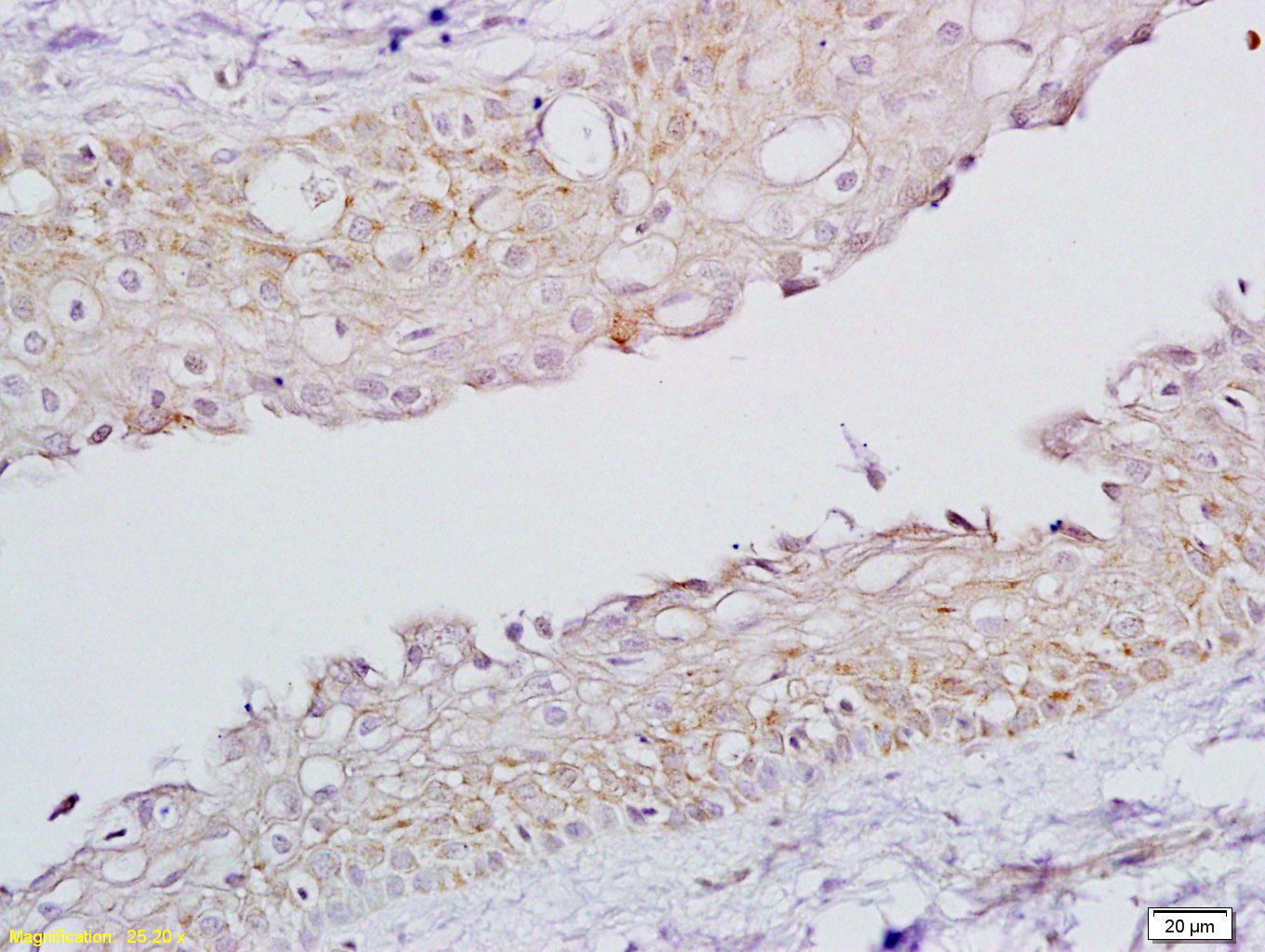
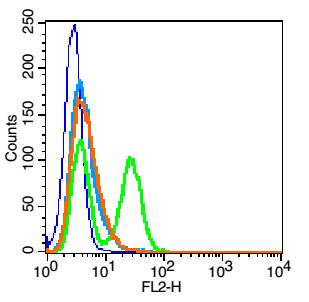


 +86 571 56623320
+86 571 56623320
 +86 18668110335
+86 18668110335

